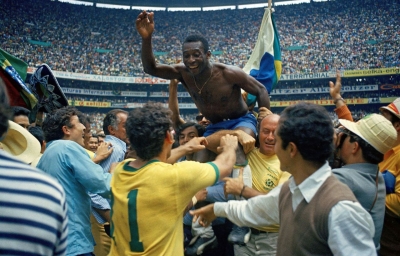
Pelé is carried off the field by fans after Brazil defeated Italy in the final of the 1970 World Cup.
Alessandro Sabattini/Getty Images
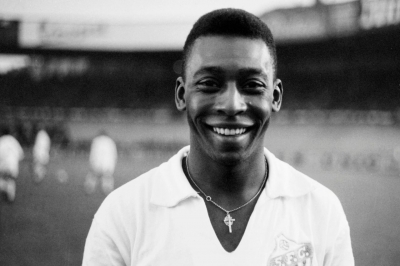
Pelé was born Edson Arantes do Nascimento on October 23, 1940. His parents named him after inventor Thomas Edison. He got the nickname Pelé when he was a young boy and had trouble pronouncing the name of his favorite player, a goalkeeper named Bilé who played with his father at a local club.
AFP/Getty Images
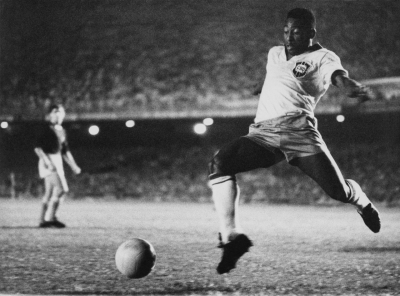
Pelé was just 16 years old when he made his debut for Brazil’s national team. It was less than a year after he started playing professionally with Brazilian club Santos in 1956.
Pictorial Parade/Archive Photos/Getty Images
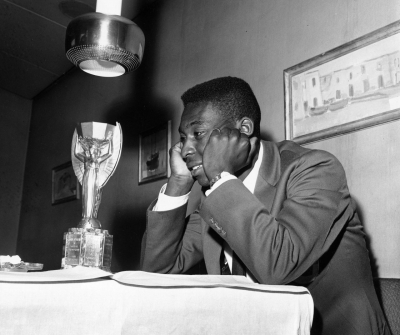
Pelé admires the Jules Rimet Trophy, the prize for winning the World Cup, circa 1958.
Popperfoto/Getty Images
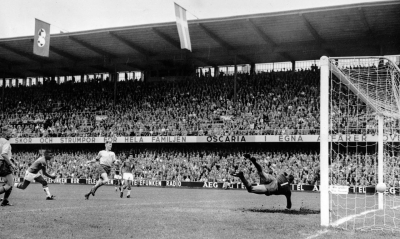
Pelé scores Brazil’s third goal during the 1958 World Cup final against Sweden. Brazil won 5-2 to claim its first-ever World Cup. “When we won the World Cup, everybody knew about Brazil,” he told CNN’s Don Riddell many years later. “I think this was the most important thing I gave to my country because we were well known after that World Cup.”
AP
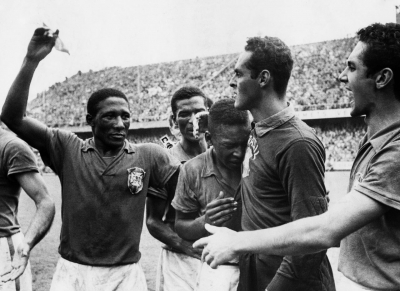
Pelé cries on Brazilian teammate Gilmar after winning the World Cup in 1958. In addition to scoring twice in the final, Pelé scored a hat trick in the semifinal win against France. He also scored the team’s lone goal in the quarterfinal win over Wales.
Keystone-France/Gamma-Rapho/Getty Images
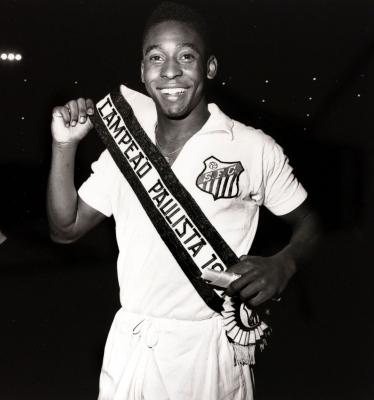
Pelé wears a sash after Santos became São Paulo state champions in 1961. Pelé played for the club from 1956-1974, scoring 618 goals and winning six Brazilian league titles. In 1962 and 1963, Santos won the Copa Libertadores, which is South America’s premier club competition.
Popperfoto/Getty Images
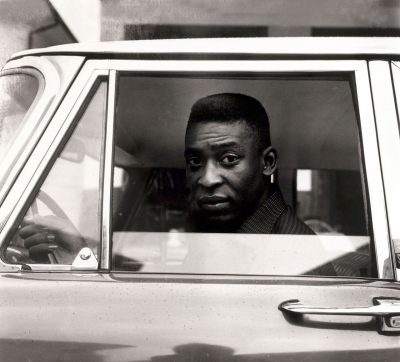
Pelé sits behind the wheel of his car in 1961. He grew up poor in Bauru, Brazil, and honed his craft playing barefoot with improvised balls made of coconuts or balls of socks.
Popperfoto/Getty Images
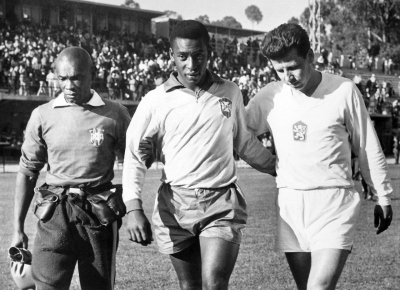
Pelé returned to the World Cup with Brazil in 1962 and starred in the team’s opening win over Mexico. But he was injured in the second match against Czechoslovakia and would miss the rest of the tournament. Brazil still defended its crown.
AP
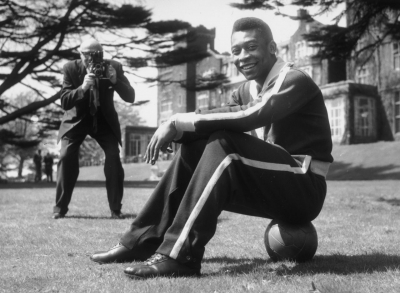
Pelé sits on a ball during a break in training in 1963. The Brazilian national team was in London to play a match against England.
John Pratt/Hulton Archive/Keystone/Getty Images
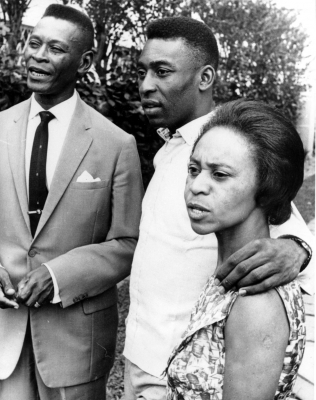
Pelé is seen with his parents, Dondinho and Celeste, in 1965. Dondinho was a soccer player himself and taught his son how to play.
AP Photo
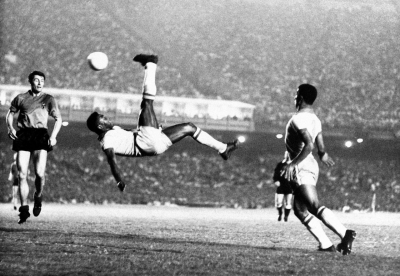
Pelé performs an overhead kick during a match in 1965. Dutch soccer star Johan Cruyff once said Pelé “was the only footballer who surpassed the boundaries of logic.”
AP
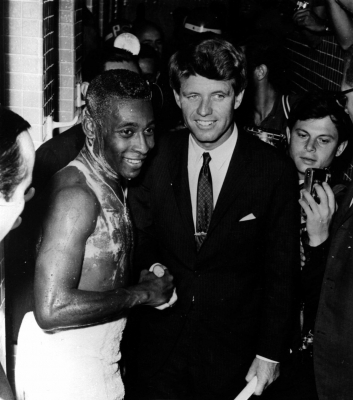
A soapy Pelé shakes hands with US Sen. Robert F. Kennedy after a match in Rio de Janeiro in 1965.
Allsport/Hulton Archive/Getty Images
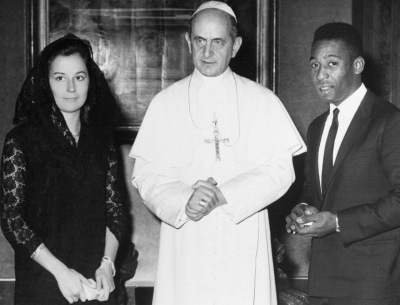
Pelé and his first wife, Rosemeri, meet Pope Paul VI while visiting the Vatican in 1966. The newlywed couple had been honeymooning in Germany, Austria and Italy.
AP
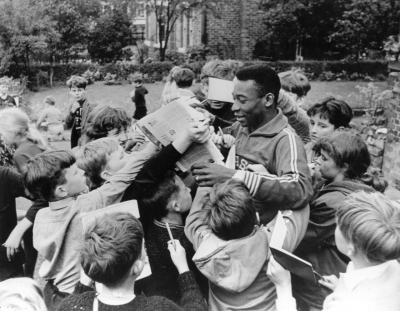
Pelé signs autographs for children in 1966. He played in the 1966 World Cup with Brazil but the team didn’t advance out of the group stage that year.
Central Press/Hulton Archive/Getty Images
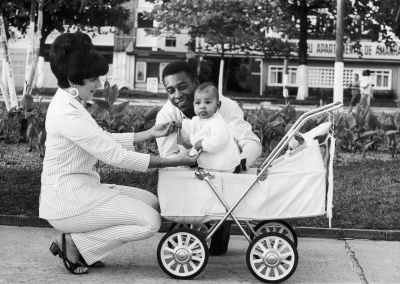
Pelé and his wife, Rosemeri, take their young daughter, Kely, out for a walk in 1967. It was their first child together. They would have three children in all before divorcing in 1978.
AP
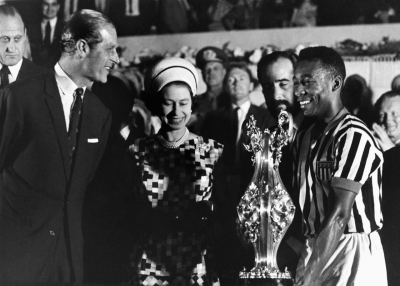
Britain’s Queen Elizabeth II, accompanied by her husband, Prince Philip, award a trophy to Pelé after watching a match in Rio de Janeiro in 1968.
AP Photo
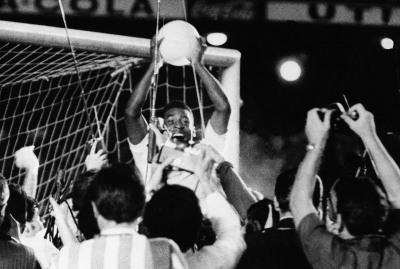
Pelé celebrates with fans after scoring his 1,000th career goal in 1969.
AP
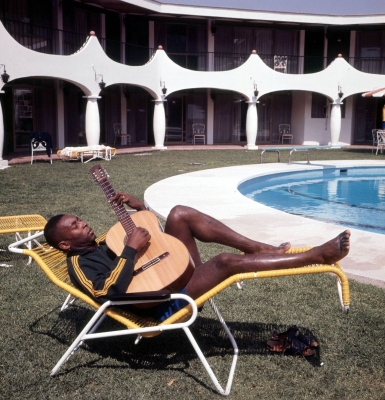
Pelé relaxes by a hotel swimming pool while in Mexico for the 1970 World Cup.
Popperfoto/Getty Images
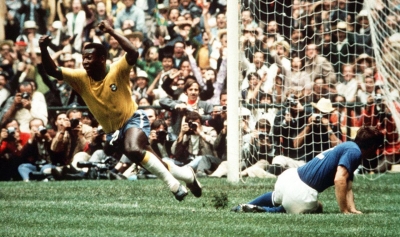
Pelé celebrates after scoring the first goal for Brazil in the 1970 World Cup final against Italy. The Brazilians won 4-1. “Before the match, I told myself that Pelé was just flesh and bones like the rest of us,” Italian defender Tarcisio Burgnich said after the match. “Later, I realized I’d been wrong.”
Colorsport/Shutterstock
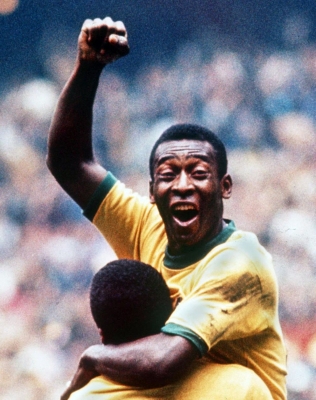
Pelé celebrates with Jairzinho after winning the World Cup final in 1970. The Brazilians won all six matches at the tournament, and that team is considered by many to be one of the best of all time.
Colorsport/Shutterstock
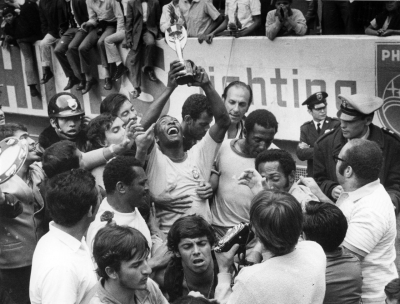
Pelé raises the Jules Rimet Trophy after winning the 1970 World Cup. Brazil was able to permanently keep that trophy for winning its third title, and a new World Cup trophy was introduced in 1974.
Horstmüller/ullstein bild/Getty Images
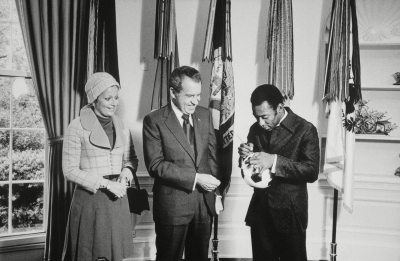
Pelé signs a soccer ball for US President Richard Nixon while visiting the White House with his wife, Rosemeri, in 1973. Pelé met several US presidents during his life. His celebrity status brought this famous quip from Ronald Reagan in 1986: “My name is Ronald Reagan, I’m the President of the United States of America. But you don’t need to introduce yourself, because everyone knows who Pelé is.”
Everett/Shutterstock
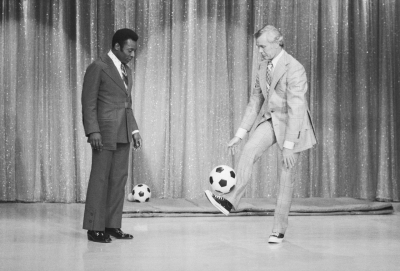
Late-night television host Johnny Carson gets some pointers from Pelé in 1973.
Bettmann Archive/Getty Images
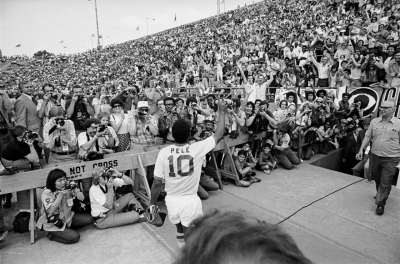
Pelé waves to the crowd before making his debut with the New York Cosmos in 1975. He signed a $1.4 million a year contract with the Cosmos and made a big splash in the emerging league.
Peter Robinson/EMPICS/Getty Images
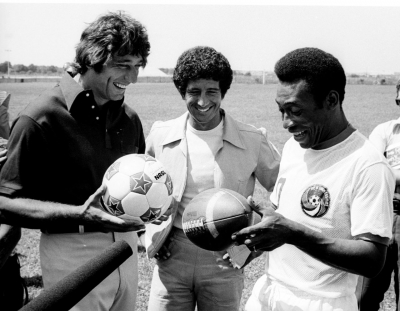
American football star Joe Namath, left, exchanges balls with Pelé during a promotional event in New York in 1975.
Ron Galella/Ron Galella Collection/Getty Images
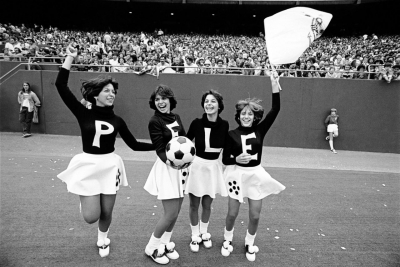
Cheerleaders wait to welcome Pelé onto the field during a Cosmos match in 1977.
Peter Robinson/EMPICS/Getty Images
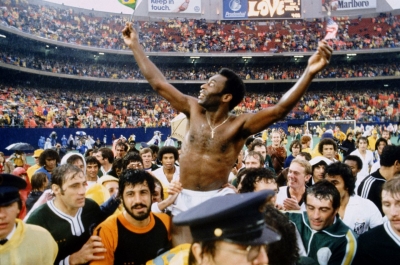
Pelé holds Brazilian and American flags after his final match in 1977. It was an exhibition at Giants Stadium between the Cosmos and his longtime Brazilian club, Santos. He played the first half for the Cosmos and the second half for Santos.
Peter Robinson/EMPICS/Getty Images
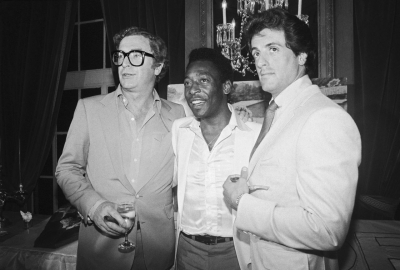
Pelé attends a party with actors Michael Caine, left, and Sylvester Stallone. The three starred together in the 1981 film “Escape to Victory.”
Bettmann Archive/Getty Images
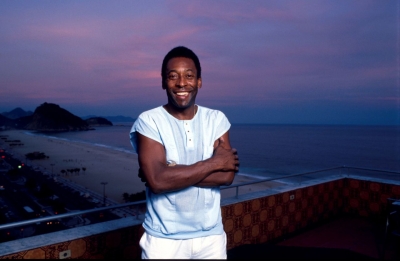
Pelé poses for a photo in Rio de Janeiro in 1991.
Paulo Fridman/Corbis/Getty Images
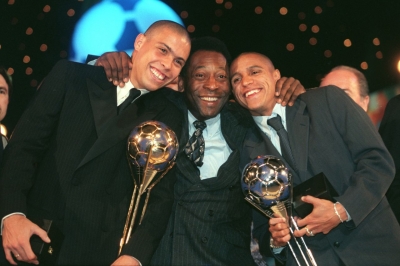
Pelé embraces two Brazilian stars — Ronaldo, left, and Roberto Carlos — after they finished first and second, respectively, for the 1997 FIFA World Player of the Year Award.
Matthew Ashton/EMPICS/Getty Images
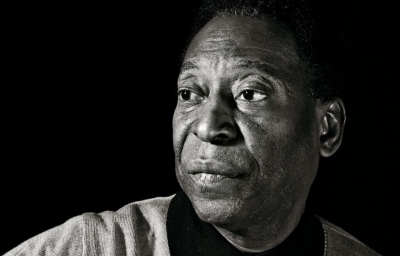
Pelé poses for a portrait in 2006. In his later years, Pelé was an outspoken political voice who championed the poor in Brazil. He served as a UNICEF Goodwill Ambassador for many years, promoting peace and support for vulnerable children.
Tom Jenkins/Getty Images
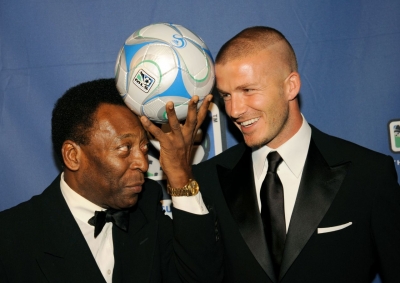
Pelé and English soccer star David Beckham attend a gala benefit celebrating soccer in the United States in 2008.
Shawn Ehlers/WireImage/Getty Images
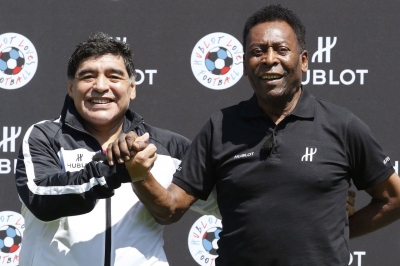
Pelé and Argentine soccer great Diego Maradona pose for a photo together in 2016. The two shared FIFA’s Player of the Century award in 2000. After Maradona’s death in 2020, Pelé paid tribute to his “dear friend” on Instagram: “One day, I hope, we will play soccer together in the sky.”
Patrick Kovarik/AFP/Getty Images
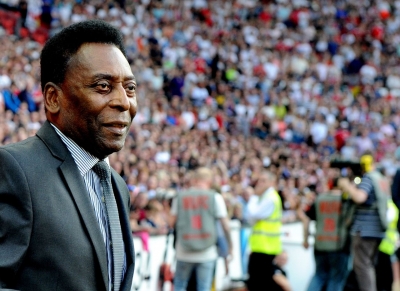
Pelé attends a charity match in Manchester, England, in 2016.
Shirlaine Forrest/WireImage/Getty Images
Pelé's life in pictures
Prev
Next
CNN
—
Born into poverty – he used to kick a grapefruit around Brazil’s Minas Gerais state – Pelé finished his career as arguably soccer’s greatest ever player.
He was that rarity; like Muhammad Ali, Pelé was a sports star, who transcended his sport.
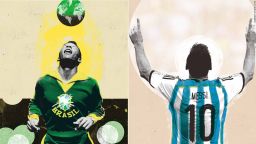
Courtesy of Nate Kitch
The Brazilian brought joy and creativity to a sport often stuck in rigidity and personified o jogo bonito – “the beautiful game.”
“Pele changed everything,” wrote current Brazil international Neymar Jr. after Pelé’s death was announced.
“He turned football into art, into entertainment. He gave a voice to the poor, to Black people and especially. He gave visibility to Brazil.”
From dazzling as a 17-year-old in 1958 on his way to his first World Cup success to claiming the Golden Ball award as player of the 1970 World Cup as he won a third global title, “O Rei” (“The King”) achieved almost everything possible in the famous yellow and blue of Brazil.
And there were goals – lots of them.
Pelé scored 757 goals in 812 official matches for club and country. However, there is disagreement over just how many goals he scored in his career. According to Reuters, Brazil’s football association and Santos say Pelé scored 1,283 goals in 1,367 matches, though FIFA puts the number at 1,281 goals in 1,366 games.
But it wasn’t just the phenomenal number of goals he scored. As Neymar suggests, Pelé was also an artist on the pitch.
“Even if he did not use a brush, or a pen, but simply had a ball at his feet,” says CNN Sport’s Don Riddell.
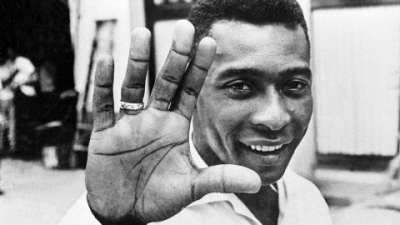
“Before Pelé, ’10’ was just a number,” wrote Brazil international Neymar Jr. in an Instagram post. “He is gone, but his magic will remain.”
Domicio Pinheiro/Agência Estado/AP
A master at work
The world first got a glimpse of Pelé at the 1958 World Cup.
“When we arrived in Sweden, no one knew what Brazil was. They know about Argentina … Uruguay. It was a surprise for us,” Pelé told CNN in 2016.
At the age of 17 years and seven months, Pelé became the youngest person to play in a World Cup, a record the Brazilian held until Northern Ireland’s Norman Whiteside took that landmark in 1982.
Almost 15 years after leaving the world agog at the 1958 World Cup, Pelé hung up his boots for the Seleção, bequeathing his nation the legacy as the most successful in World Cup history and the most feared team in international football.
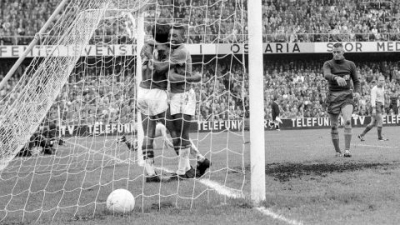
Pelé hugs his teammate Vava after scoring the goal to take the score to 2-1 in the 1958 World Cup final.
IBL/Shutterstock
Pelé’s crowning moment for Brazil came at the 1970 World Cup in Mexico, a tournament further romanticized by being the first World Cup broadcast in color.
Throughout that tournament, Pelé blazed a trail of technicolor splendor, a blur of yellow and gold, beguiling and bewitching opposition teams.
His four goals earned him player of the tournament, capped by an assist to Carlos Alberto’s breathtaking goal in the final against Italy.
“We won the World Cup, and I think in my life in sport (that was the pinnacle), no doubt,” Pelé told CNN.
Italian defender Tarcisio Burgnich summed up Pelé’s superhuman genuis fittingly: “I told myself before the game, he’s made of skin and bones just like everyone else. But I was wrong.”
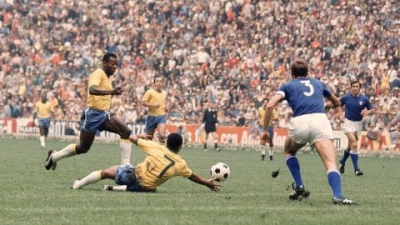
Pelé in action against Italy in the 1970 World Cup final.
Jerry Cooke/Sports Illustrated/Getty Images
Even moments when Pelé didn’t score helped cement his legend status – notably England goalkeeper Gordon Banks’ incredible block from the Brazilian’s powerful header in a group game, which is widely considered to be the greatest save of all time.
“The save was one of the best I have ever seen – in real life and in all the thousands of games I have watched since,” wrote Pelé in a 2019 Facebook post in tribute to Banks following the goalkeeper’s death.
“When you are a footballer, you know straight away how well you have hit the ball. I hit that header exactly as I had hoped. Exactly where I wanted it to go. And I was ready to celebrate.
“But then this man, Banks, appeared in my sight, like a kind of blue phantom.”
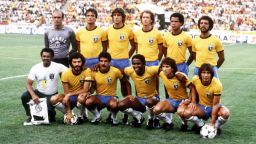
Brazil team group. (top l-r) Waldir Perez, Leandro, Oscar, Falcao, Luizinho, Junior. (front l-r) Trainer, Socrates, Cerezo, Serginho, Zico, Eder. (Photo by Peter Robinson/EMPICS via Getty Images)
Peter Robinson/EMPICS/PA Images/Getty Images
Despite playing all but three years of his club career with Brazilian side Santos, Pelé’s dynamism, majesty with the ball and lethality in front of goal ensured he became one of football’s first Black global stars.
Pelé admitted to CNN in 2015 that he had plenty of interest from Europe to make the move across the Atlantic, but chose not to out of loyalty and “love” for Santos; yet another reason why he is so beloved in his native country.
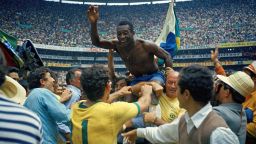
Edson Arantes Do Nascimento Pele of Brazil celebrates the victory after winnings the 1970 World Cup in Mexico match between Brazil and Italy at Estadio Azteca on 21 June in Città del Messico. Mexico (Photo by Alessandro Sabattini/Getty Images)
Alessandro Sabattini/Getty Images
“In the past, it was a profession filled with love, now it’s just a profession,” Pelé said.
“There isn’t that love of playing for my club, playing for my country. Clearly, a footballer needs to make a living from the game. It’s different from my time.”
Coping with pressure
Such was his impact as a soccer player, Pelé also became the symbol of a new country, according to a recent Neflix documentary.
“To cope with that, I think he creates this Pelé character, someone who almost kind of forgoes his own identity to become Brazil essentially,” Ben Nicholas, co-director of the documentary about the Brazilian’s life, told CNN.
As well as shouldering the burden of a country’s aspirations on the world stage, the ascension of the Brazilian military in 1964 that showed interest in football as a tactical and political strategy – in particular, targeting the 1970 World Cup as a “government issue” – presented a problem for the apolitical Pelé, according to the Netflix documentary.
“There’s a really telling line at the end of the film,” the other director of the documentary, David Tryhorn, said, “where you’re expecting Pelé to give us perhaps a ‘Pelé-ism,’ where he would talk about joy and happiness, but he actually talks about ‘relief.’”
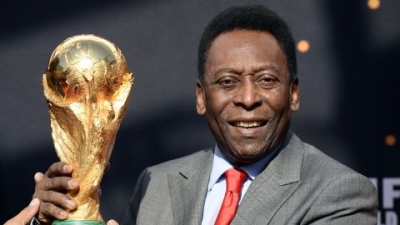
Pelé poses with the World Cup trophy on March 9, 2014, in Paris.
Franck Fife/AFP/Getty Images
The footballing GOAT debate is one which will rage on until the end of time – is it Pelé? Or is it Diego Maradona? Or Lionel Messi or Cristiano Ronaldo?
But, Brazil’s pure love and adoration for Pelé cannot be matched and is one which extends further than just an excellent footballer, but to a totem pole for a nation.
